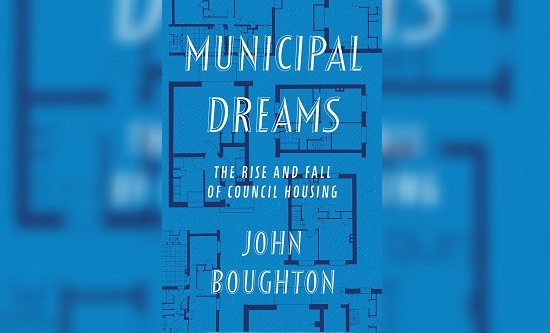
Municipal dreams: the rise and fall of council housing
John Boughton 330pp Verso 2018 £18.00 hardback
There is no doubt that Boughton’s book is a well-researched and useful source of information. Yet like so many books on the history of working class housing it remains within an academic framework: it provides a critique of government policies which undermined public housing provision, but in so doing obscures the real cause of the current housing crisis: capitalism itself.
Boughton’s book dispels one or two of the myths surrounding council housing. In particular he punctures the notion that council housing was built to meet the needs of the working class: ‘… it was almost universally the case that council estates in their earlier years, and well into the post-1945 era, were the home of a (relatively) affluent and aspirational working class. Indeed, their success to a significant degree rested on just that’ (p47). The idea that the post-war council building programme met the housing needs of the mass of the working class is trotted out by Labour Party politicians and their admirers: in reality it was not until the late 1960s that there was a concerted attempt at slum clearance in the major cities. Poorer sections of the working class had to put up with atrocious housing for decades after the defeat of the 1945 Labour government.
Municipal Dreams pays tribute to the architects and designers who laid out the council estates in the post-war period – an aspect of council housing history which is often ignored. He points out that the London County Council Architect’s Department in the 1950s was the ‘world’s largest architectural practice’, with over 1,500 staff including 350 professional architects. It was also strongly influenced by the Communist Party, which Boughton does not mention. The carefully-cultivated ruling class image of council estates as inherently drab is dispelled by the attention Boughton pays to a wide number of schemes – for instance Alton East in Roehampton (south west London) – commended by historian and architectural commentator Nikolaus Pevsner for its ‘picturesque informality’; the currently-threatened Cressingham Estate in Lambeth, or the Grade 2-listed Byker Wall estate in Newcastle. In the later period of the 1960s and 1970s the more efficient systems-building techniques however had very mixed results: Hulme Crescent estate south of Manchester city centre was a spectacular design, but badly built so that leaks and condensation appeared within a few years, and the absence of any local janitors quickly resulted in its deterioration and subsequent demolition in 1994.
The final chapter of the book is entitled ‘People need homes – these homes need people’, which he attributes to the Focus E15 campaign but without naming it (or the RCG which has been central to the campaign) in a description of the struggle of Newham women against eviction in 2013 (pp278-79). Given that he names other residents’ groups who have attempted to take on redevelopment schemes such as Our West Hendon, this must have a political character. The chapter is devoted both to the various ConDem and Tory government policies in relation to benefit cuts and housing, to the multitude of regeneration schemes particularly in London which have resulted in the loss of thousands of social homes, and to the plethora of different schemes which councils have adopted in order to build a very small number of homes, with a tiny proportion for social rent. These are but a continuation of the policies of the 1997-2010 Labour government which demanded the semi-privatisation of a large proportion of council housing stock in return for government money to meet the Decent Homes Standard; in those 13 years fewer than 8,000 council homes were built.
Boughton covers all of this in considerable detail. But to describe is not to analyse. And he finds excuses for the perverse behaviour of Labour councils: for instance, there is a ‘positive side’ to Lambeth council’s plans (p285), it may destroy Cressingham Gardens, but it will build 1,000 council homes – as if this was some compensation; in fact although the houses will be built by the council’s development vehicle, few if any will be for social rent. Boughton celebrates such small-scale council housing developments as have taken place across the country: these are a drop in the ocean however, and even Labour’s promise of building 100,000 ‘genuinely affordable’ homes per year in its 2017 manifesto was less than half the number of new households that will be formed over the next 12 years: whatever he hopes, they do not mark ‘a significant shift in our politics’ (p287).
The problem is not just that there has been ‘a failure of the free market to provide good and affordable homes to all those who need them’ (p288): there is no inherent drive within the ‘free market’ to provide homes for the working class. And in conditions of crisis, nor is there any drive for the state to step in unless there is a massive working class movement demanding adequate housing conditions. Whatever Boughton imagines Labour might do, it will not. With astronomical land prices, themselves an expression of the economic crisis, the extent of government subsidy necessary for any council house building programme would be an abomination as far as the ruling class is concerned. With Corbyn and McDonnell failing every time they are tested, there can be no serious expectation that a Labour government will meet the needs of the working class – that requires socialism.
Robert Clough




